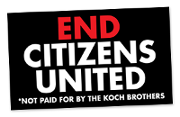Biblio
Filters: First Letter Of Last Name is B [Clear All Filters]
(2001). The Anxiety & Phobia Workbook: A Step-by-Step Program for Curing Yourself of Extreme Anxiety, Panic Attacks, and Phobias.
"lt has been my repeated experience that clients experience relief from anxiety as well as phobias when they come to feel that their life has meaning, purpose, and a sense of direction. Until you discover something larger than self-gratification—something which gives your life a sense of purpose—you may be prone to feelings of boredom and a vague sense of confinement because you are not realizing all your potential. This sense of confinement can be a potent breeding ground for anxiety, phobias, and even panic attacks." (p, 40)
(1973). Aging & mental health : positive psychosocial and biomedical approaches.
"New models of vocational rehabilitation, supported employment, and skill development will need to be developed to respond to the desires of older adults to engage in meaningful activities in late life." (p. 177)
(1992). Abuse in the Workplace: Management Remedies and Bottom Line Impact.
"Certain conditions are necessary for creativity to flourish, one of which is the time to play with ideas while in an open mode of thinking: relaxed, expansive, less purposeful, more contemplative (Cleese 1991). Organizationally, this translates into administrative slack. Peter Drucker relates a company's ability to innovate to the amount of administrative slack it provides in its daily operations ('Creativity in Danger' 1991)." (p. 149)
(C)2014 CC-BY-NC 3.0, workcreatively.org











 ]
]